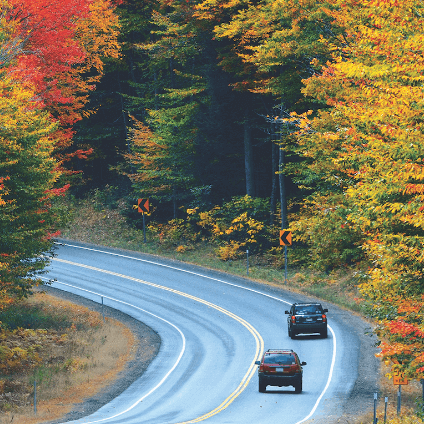Winter Driving Tips

With the return of cold weather to New England, it is essential that every driver review the guidelines for safe winter driving. While it seems that almost everyone focuses on snow and ice when talking about driving in the winter, winter driving safety starts before the snow and ice cover the roadways.
The first sign of real winter is the frost that forms on the windshield and other windows of a car or truck. Since visibility consists of both being seen and being able to see, before the driver pulls away from the curb or out of the driveway, it is essential that the windows are clear of frost, ice and snow. All too often a driver pulls out after removing just enough to see out of a hole in the ice and snow on the front window with the belief that the defrost will take care of the rest. Considering that most accidents occur within five miles of home, this type of behavior could be one of the causes of that particular statistic!
Another key winter driving tip is no different than that offered for general safe driving: Make sure you have good tires on your vehicle. While general safe-driving tips call for tread depth of no less than 1/16 of an inch (Hint: Use a penny. if you can see Lincoln's head, you need new tires), it is better to have more during winter driving, and if you are down to 1/16 of an inch, it is best to replace the tires before heading out in the snow.
Other winter driving tips include:
- Slowing down: With snow on the roadways, the stopping distance increases, and the best way to have more room to live is to drive as the conditions dictate. Trying to do 50 mph in a 50 mph zone with snow on the roadway is a sure way to end up in a fender bender or worse.
- Allow greater distance between vehicles: While normal conditions call for the three-second rule behind the vehicle in front (there should be three seconds of distance between you and the car ahead of you), it may be prudent to allow four to five seconds with snow and ice on the roadway.
- During wintry conditions, it is essential to be able to see what's ahead, so lights and wipers are necessary. Part of the visibility factor is to not drive faster than your ability to see within stopping distance. During heavy rain or snow, outrunning your headlights, as this is called, puts you at risk for an accident.
- Lastly, the best advice when it comes to driving with snow and ice on the road is to avoid it if at all possible. If snow is forecast, get those essential items before the snow begins to fall and stay home or someplace where it is possible to stay until the roads are clear. If this isn't possible, use these guidelines and keep the driving to a minimum because the less time spent on the road means less chance of a winter accident.





